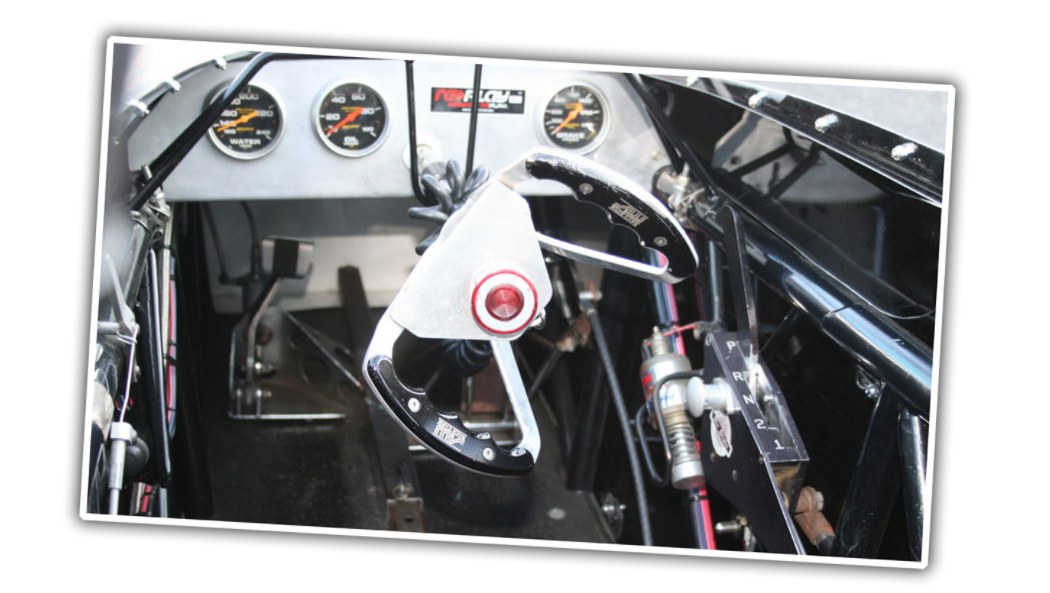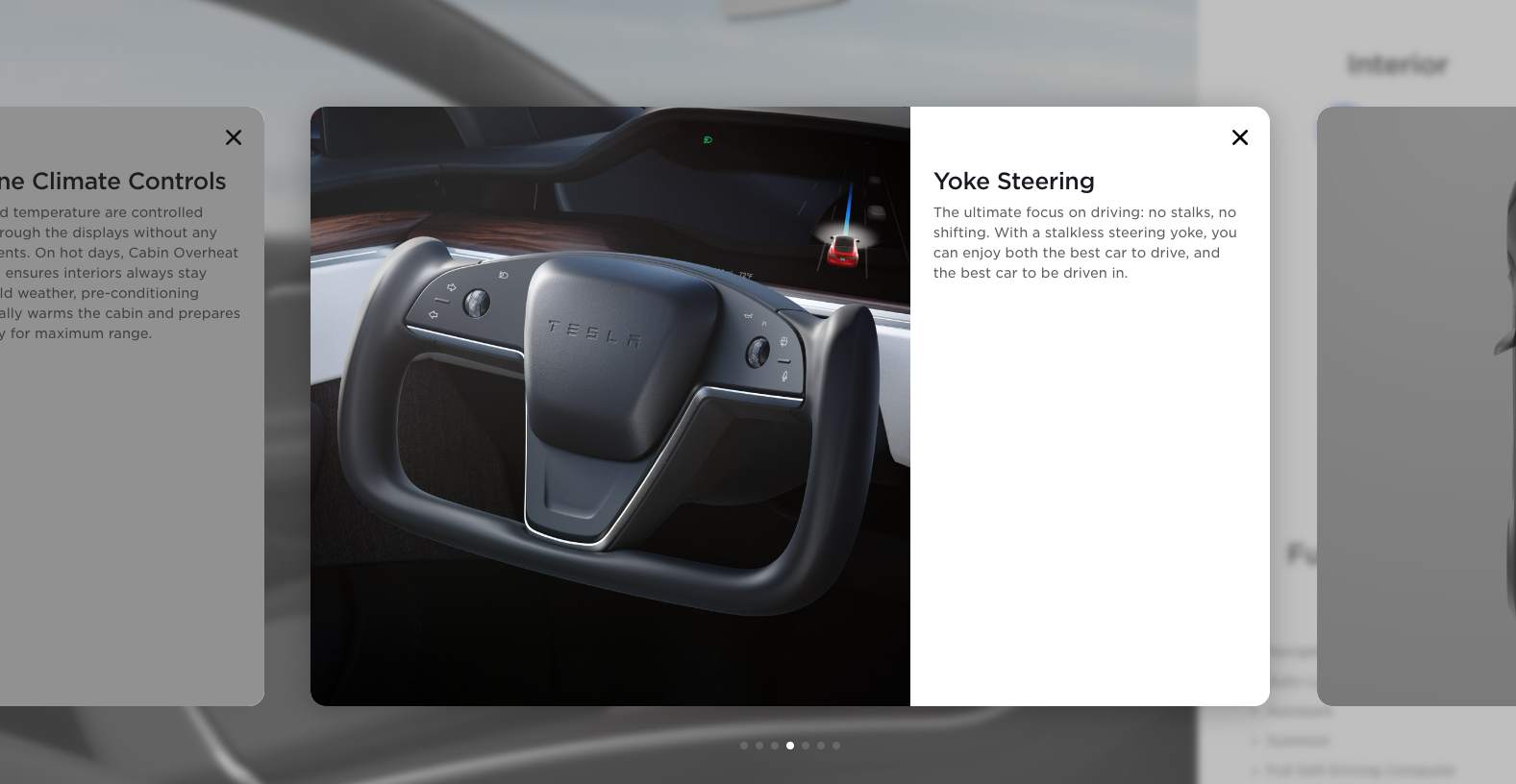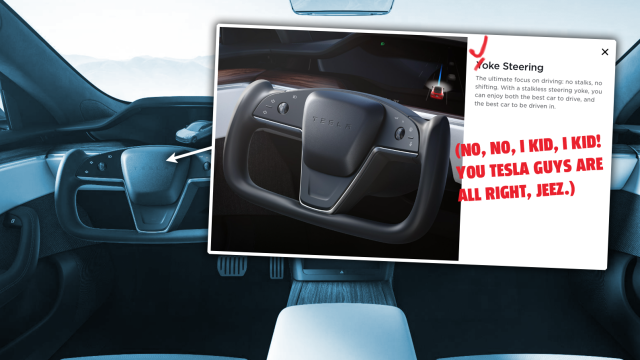We’ve discussed the refreshed and technically impressive 2022 Tesla Model S before, and especially some of the UX decisions made, including the inclusion of the cut-down, yoke–style steering wheel that now comes standard on the Model S. While we’ve had a grand time speculating about how shitty using such a steering not-wheel might be, we haven’t really had any direct, empirical evidence. Until now. Yes, someone has driven a brand-new Model S with the yoke, and, yeah, it looks like it kinda sucks.
After last week’s post about Elon Musk equating of human input and error, you’d think I’d have had enough of dead-eyed Muskovites berating me on social media and via-email, but it’s become so common now that I think my body is starting to crave it, like a drug.
With that in mind, let’s take a look at this little neighbourhood drive with the yoke:
This dude uses the yoke in the Tesla Model S and it looks abysmal. Turning rotation is so stupid (Model S is 900° (F1 car with same “yoke-style” is 300-400°)) and the dude accidentally hits the horn on the dumb, rotating, capacitive buttons at 1:45. BAD! https://t.co/k5mrARRB0D
— Quinn Nelson (@SnazzyQ) June 13, 2021
…and, a part two! This time with verbal commentary:
Of course they did
n’thttps://t.co/KvToahhkg6— E. Scott FitzGerald (@FitzStartz) June 14, 2021
He does say that it’s getting easier, and he has to think about it less, especially when you stop using “round wheel steering techniques,” or, as many of us like to call it, “all of your previous driving experience.”
At best, I’d say this looks awkward. The elimination of control stalks in favour of those little buttons for turn signals I just can’t see as an improvement, especially because the orientation and location (though I guess your thumb is always near them, or should be, but the whole side that thumb is on can change) of the signal buttons changes as you move the wheel, something that just isn’t a problem with a column-mounted indicator.
Why is this a good idea, again? Because stalks are bad?
Incidental controls aside, it’s the main function of this thing — steering, arguably a big part of driving a car — that seems difficult.
I know there’s an argument that F1 cars use yoke-type wheels, but, remember, F1 cars are set up so that lock-to-lock turning can happen without the hands crossing. F1 cars themselves don’t move the front wheels more than 14 or 20 degrees even on the tightest tracks. F1 designers also don’t want drivers putting hand-over-hand like they’re parallel parking, so F1 cars make do with steering wheels that don’t even do one full turn from lock-to-lock. Again, even on the tightest tracks, they only move between 300 and 400 degrees at most.
The Model S wheel turns about two and a quarter full rotations, or around 800 degrees lock-to-lock according to one owner, which is pretty close to the standard 900 degrees/2.5 turns for most cars, as Jalopnik’s own automotive engineer David Tracy tells me. That is not what a yoke is designed to do.
The only car I’ve driven with a yoke was this:

…which you might recognise as being from a dragster, a car specifically designed to just go straight as much as possible. A yoke is a wheel design that’s shaped that way to discourage a lot of turning, which is why for cars that may need to do a lot of low-speed manoeuvring and turning, like a normal street car, a yoke is a pretty crappy design.
I’m sure it’s something a driver could eventually get used to, but that’s very much not the same thing as a new design that actually makes the operation of the machine better.
Here’s a dramatic example of why yoke-type wheels aren’t great for a lot of turning, as demonstrated by installing a yoke in a drift car. If you click the link you can watch and see why it’s not ideal, particularly for the structural integrity of your thumbs.
The yoke design also forces crossed arms a lot, which would be bad if the airbag deployed, and while that’s possible to happen with any wheel, the design of the yoke exacerbates it. The yoke precludes letting a wheel slide back into position and forces your hands to be locked onto the 9 and 3 positions. (I know a lot of track driving demands this, but there aren’t airbags there in track cars and, come on, the Model S is a street car.)

It’d be one thing if this was just an option you could decide to get or not, and I thought that might be the case, but if there’s a place on the Tesla build-and-order-your-Model S section of the website that lets you pick your wheel, I haven’t been able to find it.
Most of the tweets commenting on the video aren’t particularly positive, save for the sprinkling of Tesla apologists and evangelists, but I’d encourage you to watch it and come to your own decisions.
Ideally, you should be able to test it out yourself to see, but in the interim, I guess you could hacksaw off the upper half of your steering wheel and decide if this path is for you.
Oh, and my editor-in-chief (I want to say Ronnie somebody?) all but demanded I make you aware of his yoke bon mot, so here you go:
Seeing some videos of the new Tesla yoke. It should be called a yike.
— Rory Carroll (@Rory_Carroll) June 14, 2021
I’m all for innovation and novel approaches to things we take for granted; often, great new solutions can be found that way. The yoke, though, is different. It’s not really new, as cars with yokes (even sentient cars) have been around for decades. If drivers really wanted a yoke, they could have had a yoke, long ago.
The point is, nobody wanted one. Because for most normal driving, they suck. That seems to be the part Tesla forgot.
